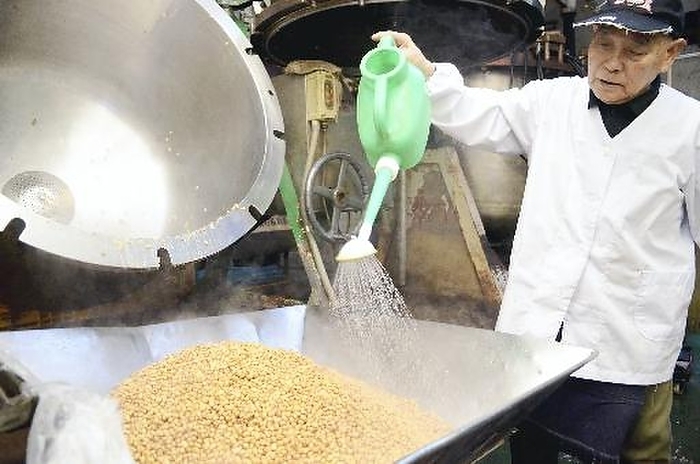
ED
Steamed black-eyed soybeans are sprinkled with natto bacillus at the Taihei Natto Plant in Sumida-ku, Tokyo.
Inside the Taiheiyo Natto factory, large black-eyed soybeans that have just been steamed in a giant pressure cooker are sprinkled with natto bacillus. President Seiichi Okazaki holds a water spout. As the gentle aroma of the natto wafts through the air, it is quickly packed by hand and stored in a room at 40 degrees Celsius for 22 hours before being shipped as "Tokyo Natto. The Hokkaido black-eyed soybeans used in Taihei Natto used to be widely used by manufacturers in Tokyo, but with the expansion of sales of Mito Natto, which uses smaller white-eyed soybeans, they were shunned because they looked like they were covered with black trash. The purchase price of natto is more than twice as high as that of foreign white soybeans, and it takes more time and effort to make natto than other types, but President Okazaki said, "The beans are plump and have many fans. Photo taken on December 18, 2015, in Sumida Ward, Tokyo, and published in the Tokyo Shokuhin Shinjidai (Tokyo New Era of Food) (Series 6) of the Tokyo Metropolitan Government's morning edition on January 11, 2016.
Details
ID
165880461
Collection
License type
Editorial
Photographer
Restrictions
High-resolution file available on request
Authorization requested before purchase
Authorization requested before purchase
Authorization requested before purchase
Authorization requested before purchase
Creation date
30-07-2021
Contact Aflo for all commercial uses.

More
Top Categories
